Grand Central Terminal Photo Gallery
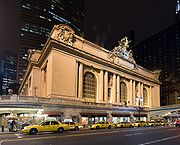
Grand Central Terminal - Photo 1
Grand Central Terminal (GCT; also referred to as Grand Central Station or simply as Grand Central) is a commuter rail terminal located at 42nd Street and Park Avenue in Midtown Manhattan, New York City. Grand Central is the southern terminus of the Metro-North Railroad's Harlem, Hudson and New Haven Lines, serving the northern parts of the New York metropolitan area.
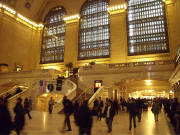
Grand Central Terminal - Photo 2
Inside Grand Central Terminal New York City on a weekday morning.
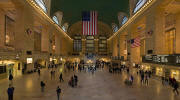
The Main Concourse - Photo 3
The Main Concourse is the center of Grand Central. The space is cavernous and usually filled with bustling crowds. The ticket booths are here, although many now stand unused or repurposed since the introduction of ticket vending machines.

The four-faced clock - Photo 4
The four-faced clock on top of the information booth in the main concourse is perhaps the most recognizable icon of Grand Central Terminal. Each of the four clock faces is made from opal, and both Sotheby's and Christie's have estimated the value to be between $10 million and $20 million.
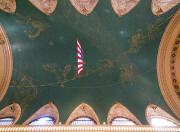
Elaborately Decorated Astronomical Ceiling - Photo 5
In fall 1998, a 12-year restoration of Grand Central revealed the original luster of the Main Concourse's elaborately decorated astronomical ceiling. The original ceiling, painted in 1912 by French artist Paul César Helleu, was eventually replaced in the late 1930s to correct falling plaster.
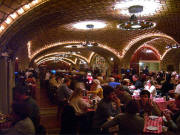
The Dining Concourse - Photo 6
The Dining Concourse is below the Main Concourse of Grand Central Terminal. It contains many fast food outlets and restaurants, including the world-famous Oyster Bar with its Guastavino tile vaults, surrounding central seating and lounge areas and provides access to the lower level tracks. The two levels are connected by numerous stairs, ramps, and escalators.
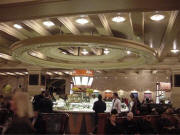
The Lower Concourse Food Court - Photo 7
This photograph shows the lower concourse food court in Grand Central Terminal in New York City.
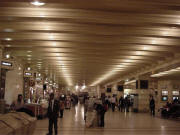
The Lower Concourse - Photo 8
This photograph shows the lower concourse in Grand Central Terminal in New York City.
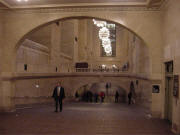
Grand Central Terminal - Photo 9
This photograph shows the ramp to the lower concourse in Grand Central Terminal NYC. Photographed Dec 2003. Area under archway has remarkable acoustical properties.


